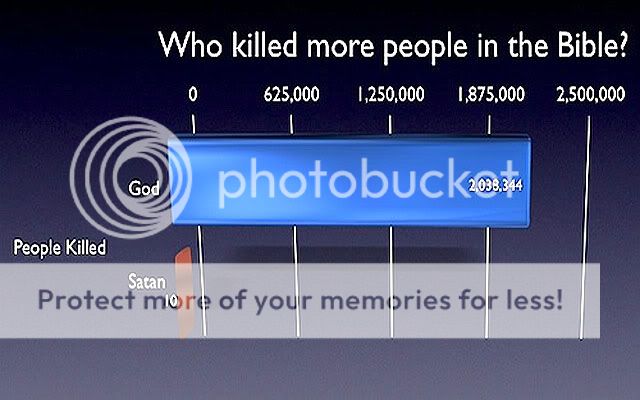 In 1 Samuel 15:3, Samuel commands Saul, “Now go, attack the Amalekites and totally destroy everything that belongs to them. Do not spare them; put to death men and women, children and infants, cattle and sheep, camels and donkeys.” As we read the rest of the chapter, Saul tells Samuel, after the battle, “I have carried out the LORD’s instructions” and “I completely destroyed the Amalekites.”
In 1 Samuel 15:3, Samuel commands Saul, “Now go, attack the Amalekites and totally destroy everything that belongs to them. Do not spare them; put to death men and women, children and infants, cattle and sheep, camels and donkeys.” As we read the rest of the chapter, Saul tells Samuel, after the battle, “I have carried out the LORD’s instructions” and “I completely destroyed the Amalekites.”
Samuel’s only disagreement with Saul is that Saul kept some of the livestock for himself, a clear violation of God’s command. Saul was not to have financial gain from this battle, which was intended to be an execution of divine justice against an exceedingly vicious group of people. Samuel seems to agree that Saul totally destroyed everyone, “men and women, children and infants,” just as God commanded. But how should we understand this command to “put to death men and women, children and infants,” coupled with Saul’s claim that he did indeed kill every Amalekite?
Did Saul literally wipe out every living Amalekite or is this command hyperbolic in nature, referring to a decisive military victory? We know that other ancient near eastern cultures used the same kinds of descriptions of military victories, such as “totally destroying” the enemy, or killing “every man, woman, and child.” But these are figures of speech which literally mean “we won a decisive military victory against our enemy.” What about in this case?
The easiest way to decide whether Saul literally killed every living Amalekite is to see whether the Amalekites are ever mentioned in the biblical record again. When we do that, we see that the Amalekites lived on!
In 1 Sam 27:8, we see that David fights Amalekites, so at least some of them are alive and well. Paul Copan and Matt Flannagan write in Did God Really Command Genocide?: Coming to Terms with the Justice of God:
This text affirms not only that the Amalekites still existed, but the reference to Egypt and Shur states that they existed in the very same area where Saul ‘utterly destroyed’ every single one of them (15: 8, 20). What’s more, David took sheep and cattle as plunder. Clearly, in terms of what the narrative says, the Amalekites were not all destroyed— nor were all the animals finally destroyed in Gilgal in chapter 15. Instead, many people and livestock from the region had survived Saul’s attack.
In 1 Sam 30, the Amalekites show up again! This time they attack the Israelite settlement of Ziklag, burn it to the ground, and carry off everyone as prisoners. Copan and Flannagan write:
So even though Saul ‘utterly destroyed’ the Amalekites (15: 8, 20), the text makes clear that many Amalekites remained so that David would not only— once again!— fight against them so that ‘not a man of them escaped,’ but after this battle, four hundred Amalekites fled on camels (30: 17 NASB).
Amalekites continue to be mentioned in the Bible:
Even beyond this, the Amalekites continue to remain, and we come across another Amalekite in 2 Samuel 1: 8, a passage where one of them takes credit for killing Saul— presumably a tall task if Saul had ‘utterly destroyed all the people’ of Amalek. And in 1 Chronicles 4: 43, the nation of Amalek is still around during the reign of Hezekiah. And then in the book of Esther, we encounter a descendant of the Amalekite king, Agag— Haman ‘the Agagite’ (8: 3), also called ‘the son of Hammedatha the Agagite’ (3: 1)— who was determined to wipe out the Jewish people. Amalekites were around well after both Saul and David.
It seems clear that Saul did not totally destroy all of the Amalekites, men, women, and children. Yet Samuel, and presumably God, were satisfied that Saul obeyed God’s commands, except for keeping alive livestock and the king of Amalek. Therefore, it seems that we should take Saul’s claim that he “completely destroyed the Amalekites” as a hyperbolic statement that would literally mean, “I won the decisive military victory that God commanded me to win.”
 Judges 1:8 says, “The men of Judah attacked Jerusalem also and took it. They put the city to the sword and set it on fire.” The surface implication is that the city of Jerusalem was completely destroyed and everyone inside of it killed.
Judges 1:8 says, “The men of Judah attacked Jerusalem also and took it. They put the city to the sword and set it on fire.” The surface implication is that the city of Jerusalem was completely destroyed and everyone inside of it killed. In Christian theology, God created everything that exists out of nothing (ex nihilo), simply by speaking the universe into existence. When we turn to Mormon theology, we find a very different concept of creation. Mormons deny that God created the universe ex nihilo. What do they believe? According to the editors of
In Christian theology, God created everything that exists out of nothing (ex nihilo), simply by speaking the universe into existence. When we turn to Mormon theology, we find a very different concept of creation. Mormons deny that God created the universe ex nihilo. What do they believe? According to the editors of  Critics of Christianity sometimes point to passages in the Bible where God takes human life, and they ask, “Isn’t God breaking his own commandment to not kill?” If God can ignore the sixth commandment, then isn’t it hypocritical for him to expect us to obey it?
Critics of Christianity sometimes point to passages in the Bible where God takes human life, and they ask, “Isn’t God breaking his own commandment to not kill?” If God can ignore the sixth commandment, then isn’t it hypocritical for him to expect us to obey it? Many Christians, as they read the book of Joshua, are uncomfortable with the accounts of conquest that are recorded there. The conquest of Jericho is the first in Canaan for the Israelites. The biblical writer describes the battle of Jericho this way in Josh. 6:20-21:
Many Christians, as they read the book of Joshua, are uncomfortable with the accounts of conquest that are recorded there. The conquest of Jericho is the first in Canaan for the Israelites. The biblical writer describes the battle of Jericho this way in Josh. 6:20-21: